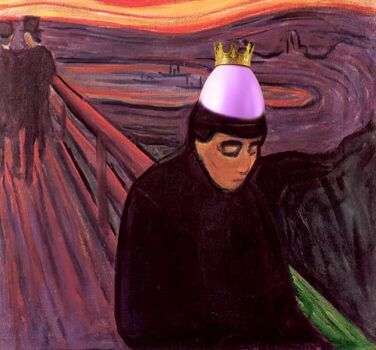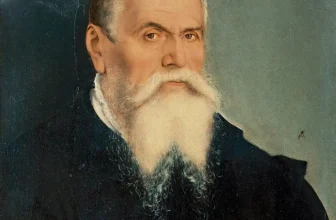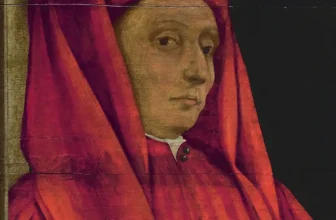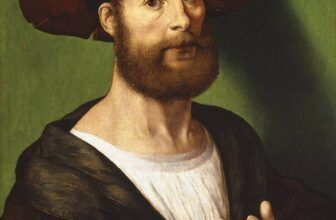Edvard Munch’s Despair: Meaning, Symbolism and Legacy
| Invest in Hidden Masterpiece: Rare Antique Oil Paintings For Sale. Limited Originals Available 💰😊 Are you looking for authentic hidden masterpiece? Explore old master antique oil paintings from the Renaissance and Baroque eras. From 16th-century portraits to 18th-century landscapes. Authenticity guaranteed, Old Master antique oil paintings for sale. Shop Now! 🎨 Renaissance And Baroque Art Landscape Antique Paintings Old Master Portrait Paintings |
Among the most haunting and emotionally charged works of modern art, Edvard Munch’s Despair holds a unique place. Though overshadowed by his iconic painting The Scream, which has become one of the most recognizable artworks in the world, Despair (1892) is a critical precursor that not only foreshadows The Scream but also offers insight into Munch’s evolving style, his psychological state, and his philosophical worldview.
At first glance, Despair may appear less dramatic than The Scream, but beneath its seemingly calm façade lies a profound exploration of alienation, melancholy, and the existential weight of human experience. To understand Despair is to understand Munch’s artistic journey, his symbolic language, and his attempt to visually capture the condition of modern life.
This article provides an extensive exploration of the painting’s story, how it was created, what it represents, its symbolism and meaning, what is happening within the scene, the type of art it embodies, and its location today.
The Story of Despair
Edvard Munch painted Despair in 1892, during a time of artistic and personal upheaval. He had been traveling in Europe, absorbing the influences of Symbolism, Impressionism, and Post-Impressionism, while simultaneously struggling with inner turmoil. His life was marked by death, illness, and mental suffering. His mother died of tuberculosis when Munch was only five, and his beloved sister Sophie died of the same disease when he was fourteen. These early traumas deeply affected him, instilling in him a lifelong preoccupation with death, anxiety, and existential dread.
Despair grew out of a specific autobiographical moment. In Munch’s own diaries, he describes walking along a fjord in Kristiania (modern-day Oslo), overwhelmed by a sudden wave of existential anguish. He recounted the experience with vivid clarity:
“I was walking along the road with two friends—the sun was setting. Suddenly the sky turned blood-red. I stopped, leaned against the fence, feeling unspeakably tired. Tongues of fire and blood stretched over the bluish fjord. My friends walked on, and I stood there trembling with anxiety—and I felt a vast infinite scream through nature.”
This diary entry is most often linked to The Scream, but before Munch gave visual birth to that iconic composition, he first attempted to capture the experience in Despair. The painting, therefore, stands as the immediate precursor, an earlier attempt to represent that world-shattering moment.
Who Painted Despair and How
The artist behind Despair is, of course, Edvard Munch (1863–1944), a Norwegian painter whose work was central to the development of Expressionism and modern art.
Munch’s method of painting was deeply personal and expressive. He often painted rapidly, with raw brushstrokes that conveyed emotion rather than precise detail. He did not seek to reproduce reality in a photographic sense, but instead to translate inner feelings into external form. He once declared:
“I do not paint what I see, but what I saw.”
This philosophy guided Despair. Rather than a literal landscape painting of the Oslo fjord at sunset, it is a psychological landscape. The strange, pulsating colors of the sky, the sweeping diagonal lines of the bridge, and the lonely figure in the foreground—all these elements were deliberately distorted to communicate a mood, not just a place.
Munch used oil paint on canvas for Despair, applying expressive brushwork and intense, non-naturalistic color. The sky is rendered in fiery reds and oranges, clashing violently with the darker tones of the land and water. The figure on the bridge, hunched and isolated, is painted in darker, muted tones, emphasizing alienation.
What Despair Is All About
Despair is about the confrontation between the individual and the vastness of existence. The painting depicts a solitary figure standing on a bridge, looking out toward a fjord beneath a blood-red sky. Unlike The Scream, where the central figure is actively contorted in anguish, the figure in Despair appears more subdued—resigned, weighed down, immobilized by inner sorrow.
The painting is not about a literal event but about the emotional truth of despair itself. The overwhelming red sky represents not just a sunset but the burning intensity of inner turmoil. The sweeping diagonal of the bridge suggests instability, as though the ground itself might give way. The figure leans against the railing, physically supported by the bridge but emotionally unsupported, vulnerable to the crushing immensity of the universe around him.
Symbolism and Meaning of Despair
Symbolism was central to Munch’s art, and Despair is rich in symbolic resonance.
The Blood-Red Sky
The most striking element is the sky, painted in unnatural streaks of crimson. This symbolizes emotional intensity—anguish, anxiety, even apocalyptic fear. Munch once remarked that he felt “a scream passing through nature,” and the sky in Despair seems to echo that unseen scream.The Bridge
The bridge is a liminal space, a passage between two states—between life and death, sanity and madness, self and other. By placing the figure on a bridge, Munch situates him in a threshold moment, caught between stability and collapse.The Solitary Figure
The figure represents humanity in its most existential condition: isolated, fragile, and overwhelmed. Unlike in The Scream, where the figure is universalized and anonymous, in Despair the figure seems more individuated, as though it might represent Munch himself. This enhances the autobiographical quality of the work.The Fjord and Landscape
Nature in Despair is not peaceful but hostile. The water appears heavy, dark, and impenetrable, echoing the figure’s mood. The landscape does not comfort—it mirrors and intensifies the inner storm.Color Symbolism
The palette is key to the painting’s emotional power. The clash of fiery reds with cool blues and blacks creates a visual dissonance that mirrors psychological dissonance. Munch was influenced by the Symbolist idea that color could directly evoke mood, and here, the color itself becomes a vehicle for despair.
What Is Happening in Despair
Despair shows a man standing on a bridge at sunset. His posture suggests heaviness, as though he is leaning for support. He is turned away from the viewer, facing the landscape, which overwhelms him with its fiery colors and oppressive presence.
But symbolically, much more is happening. The figure is experiencing an existential breakdown—a moment when the vastness of existence and the futility of human life become painfully clear. The world itself seems to reflect and magnify his inner state, creating a unity of subjective experience and external environment.
What Type of Art Is Despair
Despair belongs to the tradition of Symbolism and foreshadows Expressionism.
Symbolism (late 19th century): Munch was influenced by Symbolist writers and artists, who believed that art should reveal inner truths rather than depict external reality. Despair embodies this philosophy, using symbolic elements like the red sky and bridge to represent psychological states.
Proto-Expressionism: Expressionism, which emerged in the early 20th century, sought to distort form and color to convey intense emotion. Munch is often considered a forerunner of Expressionism, and Despair is a clear example of this proto-expressionist approach.
Thus, Despair sits at the crossroads between Symbolism and Expressionism, embodying the transition from late 19th-century art into the modernist experimentation of the 20th century.
Where Is Despair Painting Today?
Edvard Munch’s Despair is housed in the Munch Museum (MUNCH) in Oslo, Norway. The Munch Museum contains the largest collection of Munch’s works in the world, as the artist bequeathed his entire estate—over 26,000 pieces—to the city of Oslo upon his death in 1944.
The museum allows visitors to see Despair in the context of Munch’s other paintings, including The Scream, Anxiety, and Melancholy, all of which are thematically linked. Seeing Despair in this setting reveals how it is part of Munch’s larger “Frieze of Life” series—a cycle of paintings exploring themes of love, anxiety, despair, and death.
Though overshadowed by The Scream, Despair remains an essential work in Munch’s oeuvre. It represents his first attempt to visually translate the overwhelming psychological experience that would later be perfected in The Scream. For scholars and art lovers, Despair provides insight into the development of Munch’s style, his artistic struggles, and his commitment to making inner life visible.
Moreover, Despair resonates deeply with viewers today. Its themes of loneliness, existential anxiety, and the struggle to find meaning in a vast, indifferent universe remain as relevant now as they were in the 1890s.
Edvard Munch’s Despair is far more than a study for The Scream; it is a profound meditation on the human condition. Painted in 1892, it reflects Munch’s personal anguish, his Symbolist leanings, and his proto-expressionist techniques. The painting depicts a solitary figure confronting an overwhelming landscape, symbolizing the crushing weight of existence. Through color, composition, and symbolism, Munch communicates despair not just as an individual feeling but as a universal human experience.
Today, housed in the Munch Museum in Oslo, Despair continues to speak across time and culture, reminding us of the fragile balance between self and world, and the enduring power of art to capture the depths of human emotion.





